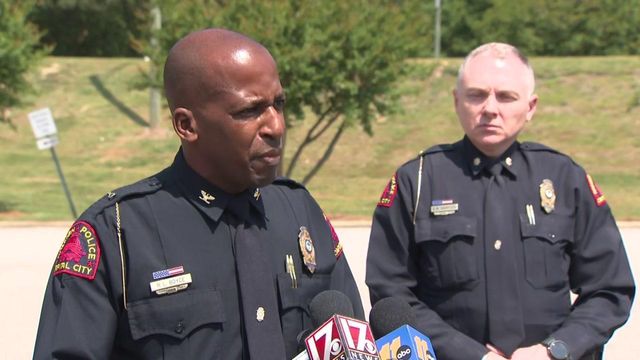Misleading images and videos emerge amid violence in Israel, Gaza
Decimated communities. Burned-out buildings. Survivors mourning loved ones killed amid smoke and debris. These are the all-too-real scenes of Israel and Gaza.
But in the days since Hamas militants launched an Oct. 7 attack on Israel, the deadliest in years, online misinformation has distorted the facts around the conflict.
Outdated and fictional images and videos are being characterized as if they are from Israel and Gaza.
As if the real toll was not enough: At least 2,200 people in Israel and Gaza have been killed in the attacks, The Associated Press reported Oct. 11. The death toll includes at least 22 Americans and over a dozen more unaccounted for.
Politicians have clouded the information environment with unproven claims that U.S. taxpayer money and a recent deal with Iran funded the massacre.
Here are the viral misleading claims about the conflict that PolitiFact has fact-checked so far.
Out-of-context images from past events
Several videos that predate the attacks in Israel and Gaza have been taken out of context and shared as if they depicted recent events.
One video claimed to show Iranian lawmakers chanting "death to America" after Hamas’ attack. But this video is from 2020 after a U.S. airstrike killed Iranian Gen. Qassem Soleimani.
Different footage purportedly showed Palestinians paragliding into Israel to kill civilians. Although legitimate news reports did describe armed paragliders launching from Gaza, this video was filmed in Egypt before the attack.
Another post claimed to show Hamas militants "dressing up as Jewish soldiers." In reality, it was a behind-the-scenes clip from a 2022 Palestinian short film.
Videos of a 2021 pro-Palestinian rally in Chicago and what appears to be rapid rocket fire from 2020 also were shared as if these events happened recently.
Video game footage shared as real
Fictional video game footage is being shared as a real depiction of the conflict in Israel and Gaza, echoing a similar trend we’ve documented in Russia’s war in Ukraine.
Numerous social media posts have mislabeled footage from the video game Arma 3 as coming from Israel and Gaza.
Arma 3 is a combat simulation game released in 2013. Users can customize it to create new terrains, weapons, aircrafts and scenarios. These creations, also called "mods," can be shared with other gamers. More than 20,000 mods are available for download, said Czech game development studio Bohemia Interactive, which made Arma 3.
"This means that players of Arma 3 can recreate and simulate any historic, present or future conflict in great detail (thanks to its advanced game engine).
This unique freedom of the Arma 3 platform comes with a downside: videos taken from Arma 3, especially when the game is modified, are quite capable of spreading fake news," the game’s developers said in a statement addressing the misleading use of Arma 3 footage.
Claims about U.S. aid to Israel
A viral document across social media platforms claimed to show President Joe Biden authorizing $8 billion in military aid to Israel. But the memo was altered.
The original memo, published July 25 on the White House website, announced it had authorized up to $400 million to aid Ukraine.
The U.S. is sending multiple military ships and aircraft closer to Israel and will supply the Israel Defense Forces with munitions. But additional U.S. aid requires approval from Congress.
Claims about Iran, the U.S. and funding for Hamas’ attack and Israel’s response
Republicans, including former President Donald Trump, were quick to blame Biden for Hamas’ attack, claiming that a recent hostage-release agreement gave Iran access to $6 billion that it used to fund Hamas’ attack.
Although Iran has long supported Hamas, neither Israel nor the White House have said that there’s a direct link between Iran and Hamas’ attack.
In August, the U.S. announced an agreement with Iran to free five U.S. citizens detained in Iran in exchange for the release of five Iranians imprisoned in the U.S.
The agreement also allowed Iran access to $6 billion of its own funds that had been frozen in South Korean banks. The money comes from Iranian oil revenue and has been frozen since 2019, when Trump banned Iranian oil exports and imposed sanctions on Iran’s banking sector. (The $6 billion is not, as Trump falsely suggested, American taxpayer money.)
U.S. officials said Iran has not accessed the funds. Also, the deal limited how Iran could use the money; it can be used only to pay for humanitarian items, such as medicine and food. Experts say the unfrozen money for Iran might indirectly benefit Hamas in time.
Additionally, Sen. Tim Scott, R-S.C., claimed the Biden administration "wanted Israel to stand down after the attack" by Hamas. But that’s Mostly False.
Scott, a Republican presidential candidate, said he was referring to a now-deleted post by the State Department’s Palestinian Affairs outpost in Jerusalem that condemned the Hamas attacks while urging "all sides to refrain from violence and retaliatory attacks."
But this framing clashed with U.S. policy and subsequent comments from Biden that clarified U.S. support for Israel and its right to retaliate, which came in before Scott’s swipe.














